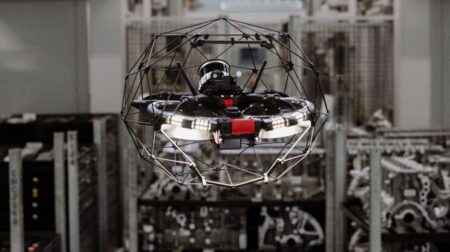Researchers at the University of California, San Diego, have developed a new system of algorithms to help four-legged robots navigate challenging terrain while avoiding both stationary and moving obstacles.
One of the ideas behind the research was to help develop robots to perform search-and-rescue missions or collect information in places that are dangerous or difficult to reach for humans.
During testing, the system guided a robot to manoeuvre autonomously across a range of environments, including sandy surfaces, gravel, grass and uneven dirt hills covered with branches and fallen leaves. The bot reportedly avoided hitting into poles, trees, shrubs, boulders, benches or people; it also navigated a busy office space without bumping into boxes, desks or chairs, according to the team.
The system offers the robot improved versatility due its combination of the bots’ existing sense of sight with another sense of perception named proprioception, which involves the robot’s sense of movement, direction, speed, location and touch.
Xiaolong Wang, a professor of electrical and computer engineering at the UC San Diego Jacobs School of Engineering and study senior author, said: “In one case, it’s like training a blind robot to walk by just touching and feeling the ground.
“And in the other, the robot plans its leg movements based on sight alone.
“It is not learning two things at the same time.
“In our work, we combine proprioception with computer vision to enable a legged robot to move around efficiently and smoothly—while avoiding obstacles—in a variety of challenging environments, not just well-defined ones.”
The team’s specially-developed algorithms were designed to combine data from real-time images taken by a depth camera attached to the robot’s head with data from sensors on the robot’s legs.
“The problem is that during real-world operation, there is sometimes a slight delay in receiving images from the camera, so the data from the two different sensing modalities do not always arrive at the same time,” said Wang.
The team’s solution was to simulate this mismatch by randomising the two sets of inputs, using a technique called multi-modal delay randomisation. The fused and randomised inputs were then used to train a reinforcement learning policy in an end-to-end manner.
According to the team, this approach helped the robot to make decisions quickly during navigation and anticipate changes in its environment ahead of time, so it could avoid obstacles faster and operate on various terrains autonomously.
Moving forward, Wang and his team hope to support the robot to navigate even more challenging environments.








